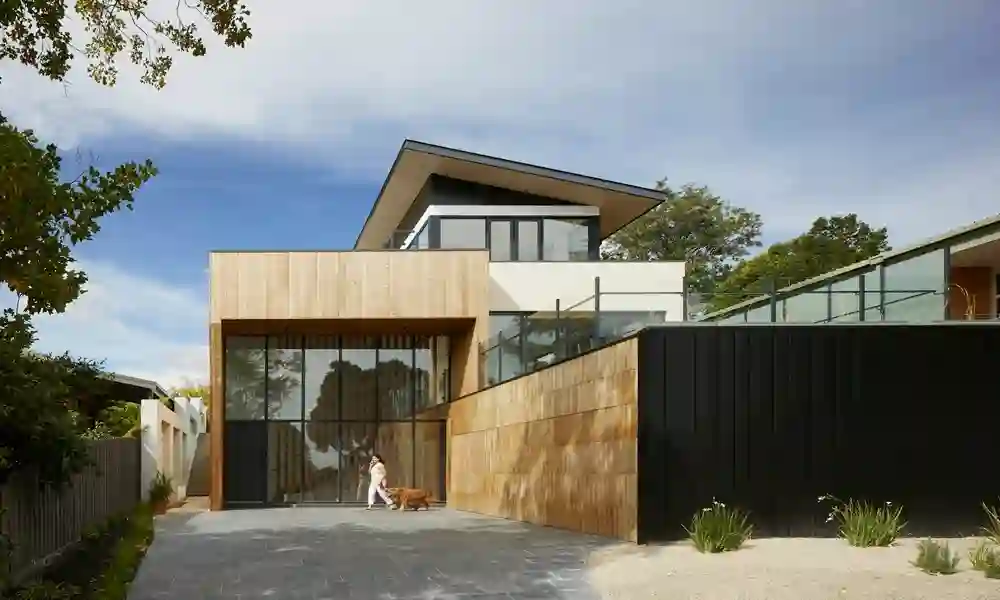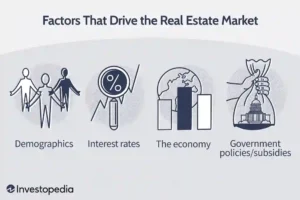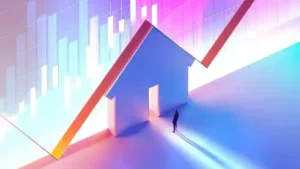Real Estate Trends: What’s Shaping the Market in 2025

The world of real estate is always shifting. But in 2025, it’s being rocked by some seismic shifts—Real Estate Trends you can’t ignore. If you think the market’s just about curb appeal and kitchen islands, think again. Remote work, tech innovations, and even climate change are pushing the industry in unexpected directions. So, whether you’re looking to buy your first home, snag a rental, or dive into real estate investing, these trends are shaping the future of the market.
1. Remote Work: The New “Suburbia” Boom
Here’s the deal: Remote work isn’t just a temporary thing. It’s sticking around, like that weirdly crunchy taco shell you always accidentally get at Taco Bell. As of 2025, it’s clear that people don’t need to be shackled to an office desk in some big city anymore. And the real estate market? Well, it’s catching up fast.
I remember when my cousin, Dan, sold his tiny NYC apartment and moved to the Catskills. “More space, better view, and I’m still within striking distance of the office!” He says. For him, this was the dream. And he’s not alone. With remote work still on the rise, people are flocking to suburban and even rural areas for homes that have space for home offices, a backyard, maybe even a pool. (Because, why not, right?)
The trends are clear: big city apartments are seeing a slight dip in demand, while small towns and outer suburbs are the new hot spots. It’s about convenience AND space now. Who knew my old high school town in Ohio would be home to some of the priciest properties on Zillow?
But, hold up. Don’t just toss out that city loft if you’re still into urban living. Urban developments are shifting too. Luxury apartments, coworking spaces, and mixed-use areas that blend work and play are thriving. There’s a growing demand for that “walkable” life, where everything you need is a short stroll away. Fast forward past the whole “remote work” talk, and you’ll see more hybrid communities popping up everywhere.
2. Sustainability: Green is the New Black
If I had a dollar for every time someone brought up “sustainability” in a conversation about real estate, I’d have enough to buy a house made entirely of recycled materials (okay, maybe a tiny one, but still). It’s no longer just a trendy buzzword; it’s becoming a must-have. In 2025, the market is leaning hard into green building practices. I’m talking solar panels, rainwater collection systems, energy-efficient insulation—the whole nine yards.
I’ll admit, I wasn’t the best at thinking about the environment when I bought my first place. I threw a fit over granite countertops instead of questioning if my heating system was wasting energy. But now? People want low-carbon, eco-friendly options. You see it everywhere: new homes come equipped with smart energy systems that save you cash in the long run. Plus, green certifications are like the ultimate badge of honor. (I mean, we all want to flex a little, right?)
There’s even a shift in urban planning, where developers are incorporating parks, bike lanes, and green spaces into new projects. One of my favorite places to visit—this cute little district in Portland—used green building strategies to turn an old industrial block into something that’s both sustainable and beautiful. And that trend? It’s spreading fast.
And fun fact: did you know that Victorians thought if you didn’t talk to your ferns enough, you’d go mad? Yeah, so now when I’m watering my houseplants and chatting with them about my day, I like to think I’m just keeping my mental health in check.
3. Tech Innovation: Smarter Homes, Smarter Investors
Alright, I won’t lie. I used to think “smart home” meant you could ask your fridge to send you a reminder about your grocery list (yes, it’s a thing now). But what’s happening in 2025 goes far beyond that. PropTech (that’s Property Technology, for you non-techies) is making it easier than ever to navigate real estate.
I still remember the first time I used a VR headset for a property tour. I almost walked into the wall. But now, it’s no big deal. Virtual tours are mainstream, meaning you can check out a property from your couch. Throw in AI-powered valuation tools, online mortgage calculators, and even blockchain (yes, cryptocurrency is creeping into real estate), and the process feels, well… futuristic.
Here’s my personal “duh” moment: My buddy Aaron—who can barely use his iPhone—was telling me last week how he used a smart thermostat to adjust the temperature in his apartment while sitting on his balcony. Like, hello, technology. So yeah, in 2025, tech is everywhere. From managing rental properties with just a few taps to getting instant alerts when a home hits the market, these innovations make it easier than ever to stay on top of things.
And I’ve learned this the hard way: Do your research before buying. A home with all the fancy gadgets might look cool, but don’t forget to ask the basic questions. Does it have good insulation? Is it in a solid neighborhood? Sometimes, all the tech in the world can’t make up for a crappy foundation.
4. Who’s Buying? The Demographic Shift
Fast forward to 2025, and the big players in real estate are shifting. Millennial buyers are stepping into their prime real estate years, and Gen Z is not far behind. So, what do they want? Not just a “four walls and a roof” scenario. No, they want homes that fit their eco-friendly, mobile lifestyle.
Take my cousin’s friend, Kelly. She’s all about sustainable living, but she also needs her space for yoga. So, she picked a home in a small town with a decent internet connection. Smart home features? Check. Close to nature? Check. And yes, a garden that she will inevitably kill with her black thumb. (No judgment, Kelly—we all know that battle.)
It’s not just millennials, though. Older generations, like boomers, are downsizing, too. Instead of sprawling estates, they’re eyeing homes that are smaller, easier to manage, and accessible for aging in place. Plus, places with plenty of social spaces, like active adult communities, are on the rise. I ran into a guy at the coffee shop last week who was raving about how his new 55+ neighborhood has a killer pickleball court.
5. The Great Affordability Conundrum
Here’s the thing. While all this is happening, affordability is still the elephant in the room. Yes, interest rates are fluctuating, and people are feeling the pinch. The dream of buying a house is still too far out of reach for many.
But there’s hope. In 2025, we’re seeing creative solutions. Developers are turning to modular homes and alternative building methods to cut costs. There’s even a rise in shared equity programs—basically, you partner with an investor who helps you buy the place and shares in the profit when you sell. You might not be able to afford that $2 million beach house in Malibu, but hey, a beach shack in the next town over is more than doable.
And let’s not even get started on the whole “foreclosure market” boom. I’ve heard enough horror stories from friends who thought they could snag a bargain only to end up with a money pit.
6. The Affordable Housing Crisis: Still an Issue
Finally, there’s the growing need for affordable housing. It’s a real issue. We’ve all heard the stories: cities with booming job markets but nowhere for people to live. If anything, this will be one of the most critical Real Estate Trends of 2025. Local governments and developers need to step up their game to address the lack of affordable homes in urban areas.
Anyway, here’s the kicker: This whole situation is a hot mess, but there’s always a way forward. Whether it’s government incentives or clever design solutions, we’ll start seeing more affordable housing projects come to life in the next few years.






